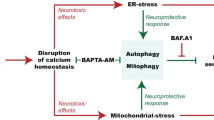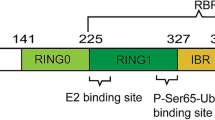Abstract
Autosomal recessive juvenile parkinsonism (AR-JP) is one of the most common forms of familial Parkinson's disease. AR-JP is characterized by selective and massive loss of dopaminergic neurons in the substantia nigra of the midbrain and absence of Lewy bodies, the pathological hallmark of idiopathic Parkinson's disease. Parkin, the causative gene of AR-JP, encodes a 52-kDa protein that is a RING-type ubiquitin (Ub) protein ligase (E3) collaborating with a Ub-conjugating enzyme (E2) belonging to a cognate class of UbcH7 or UbcH8. Analysis of parkin mutations in AP-JP patients reveals that the functional loss of parkin as an E3 enzyme is the molecular basis of AR-JP. Thus it is now clear that AR-JP is due to failure of proteolysis mediated by the Ub-proteasome system and accumulation of as yet unidentified protein(s) causes nigral neuronal death without formation of Lewy bodies. These findings should shed new light on the mechanisms underlying neurodegeneration in sporadic Parkinson's disease as well as AR-JP.
Similar content being viewed by others
Author information
Authors and Affiliations
Additional information
Electronic Publication
Rights and permissions
About this article
Cite this article
Tanaka, K., Suzuki, T., Chiba, T. et al. Parkin is linked to the ubiquitin pathway. J Mol Med 79, 482–494 (2001). https://doi.org/10.1007/s001090100242
Received:
Accepted:
Published:
Issue Date:
DOI: https://doi.org/10.1007/s001090100242




